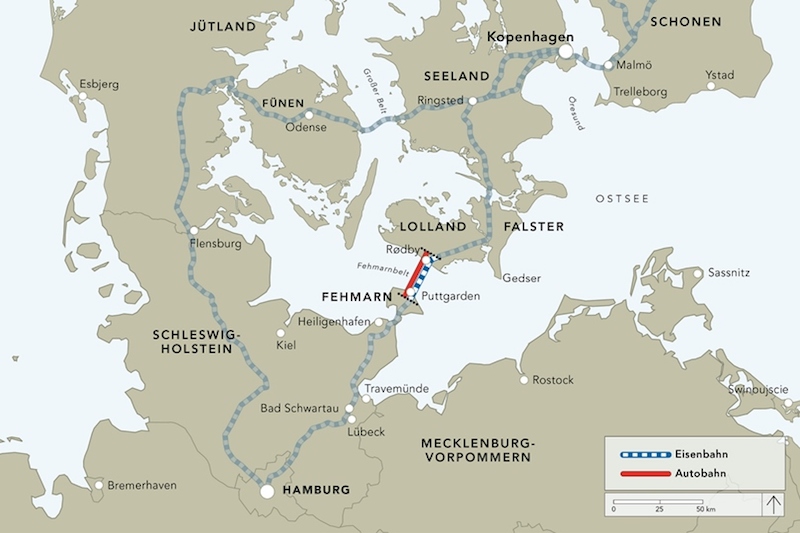Construction work has commenced on the world’s longest immersed tunnel, the Fehmarnbelt tunnel, which connects Denmark and Germany.
The tunnel, named Fehmarnbelt Fixed Link, is one of Europe’s largest infrastructure projects.
It will also be the longest combined road and rail tunnel anywhere in the world. It will comprise two double-lane motorways, separated by a service passageway and two electrified rail tracks.
Descending up to 40 meters beneath the Baltic Sea, the world’s longest immersed tunnel will link Denmark and Germany, cutting journey times between the two countries when it opens in 2029.
“We are delighted that the work is progressing on schedule,” said the Danish developer managing the project, Henrik Vincentsen who is the CEO of Femern Link Contractors A/S, the main contractors.
“The expectation is that the first production line will be ready around the end of the year, or beginning of next year,” he added. “By the beginning of 2024, we have to be ready to immerse the first tunnel element.”
Construction work on the tunnel started in January 2021 during which a groundbreaking ceremony was held on the German side of the tunnel.
Around 150 to 200 tunnel workers will be employed for the construction of the portal building in Denmark alone, while the tunnel portal will be ready for connection to the first tunnel element in 2023.
The 18-kilometer long tunnel is expected to open for trains and vehicles in 2029. Once open, the tunnel will greatly slash the distance between Germany and Denmark.
The tunnel will be built across the Fehmarn Belt, a 20 km strait between the German island of Fehmarn and the Danish island of Lolland via an immersed tube tunnel.
It is designed as an alternative to the current ferry service from Rødby and Puttgarden, which carries millions of passengers every year. The crossing that now takes 45 minutes by ferry will take just seven minutes by train and 10 minutes by car after the project is completed. Road users and train passengers will save about one hour each way compared to the ferry crossing.

A temporary harbor on the Danish side has already been completed. The harbor will host the factory where 89 massive concrete sections of the tunnel will be constructed.
Construction of the tunnel portal on the German side of the fixed link, at Puttgarden on the German island Fehmarn, will commence next year.
The project dates back to 2008 when Germany and Denmark signed a pact to build the tunnel. However, the necessary legislation by both countries and environmental impact studies took at least a decade.
Vast natural areas will be established around the project. “On land, 300 hectares of coastal wetlands will be created, and at sea, we are establishing 42 hectares of new reefs,” Vincentsen told Euronews Next.
The Fehmarnbelt link is an important component in the future European transport network and will make an important contribution to the green transition of the transport sector, according to Femern company.

